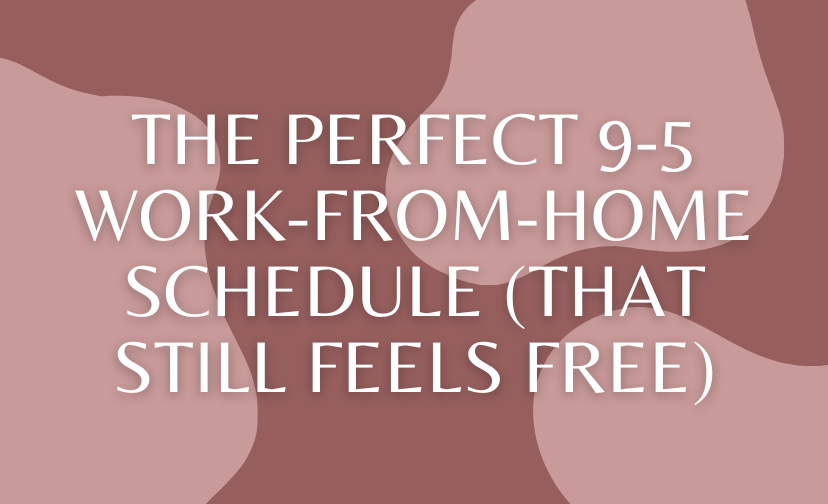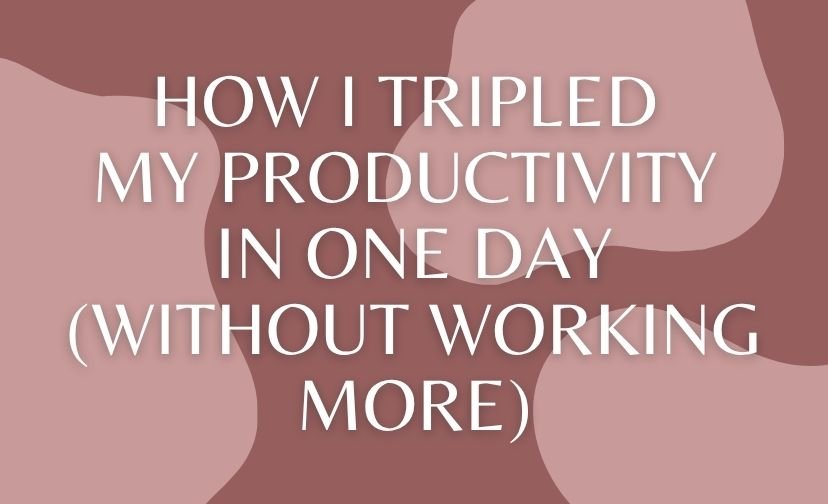Have you ever felt the weight of your workday trailing behind you like a shadow, even as you step into the comfort of your home? It’s a feeling many know all too well, where the demands of the day linger long after the clock strikes five.
But what if there was a simple, effective way to bid farewell to work stress and embrace your evening with open arms? Welcome to the 3-step formula for ending workday stress that everyone is buzzing about. This blog post will guide you through practical strategies to transform your evenings from chaotic to calm, ensuring a seamless transition from work to personal time.
Understanding the Challenge of Ending Workday Stress
Stress, that relentless companion, often sneaks into our evenings, disrupting our peace and hindering our relaxation. But why does this happen? The impact of stress on your evening routine can be more profound than you might think.
It’s not just about feeling tense; it’s about how stress affects your ability to unwind and enjoy your personal life.
The Impact of Stress on Your Evening Routine
Imagine coming home after a long day, only to find yourself still mentally trapped in the office. Stress can cast a long shadow over your evening, impacting everything from your mood to your interactions with loved ones.
When stress levels remain high, your body stays in a state of alertness, making it difficult to relax. This not only affects your mental health but also your physical well-being, leading to sleepless nights and restless mornings.
Furthermore, chronic stress can disrupt your ability to engage in activities that bring joy and fulfillment. Whether it’s reading a book, cooking a meal, or simply enjoying a conversation, stress can diminish the pleasure derived from these moments.
Understanding the far-reaching effects of stress is the first step towards reclaiming your evenings.

Common Struggles People Face After Work
It’s not uncommon to face a myriad of challenges when trying to unwind after work. Many people struggle with the inability to switch off from work-related thoughts, finding themselves checking emails or mentally replaying the day’s events.
This constant mental engagement with work can prevent you from being fully present in your personal life.
Another common struggle is the lack of a clear boundary between work and home life. In an era where remote work blurs these lines, it’s easy to feel like you’re perpetually on call. Without intentional boundaries, work stress can seep into every corner of your life, leaving little room for relaxation and rejuvenation.
Establish a dedicated workspace at home to create a physical boundary between work and leisure. This separation can significantly help in signaling to your brain that work hours are over, aiding in the transition to relaxation.
Introducing the 3-Step Formula for Relaxation
Now that we understand the challenge, let’s dive into the heart of the solution: the 3-step formula for ending workday stress. This approach is designed to help you release work-related tension, establish clear boundaries, and reconnect with activities that bring you joy.
By following these steps, you can transform your evenings into a sanctuary of peace and relaxation.
Step 1: Reflect and Release – Letting Go of Work-Related Thoughts
The first step in the formula is all about reflection and release. Take a few moments at the end of your workday to reflect on what went well and what could have been better.
This practice allows you to acknowledge your accomplishments and identify areas for improvement, freeing your mind from lingering thoughts. Writing down these reflections in a journal can be particularly effective, as it provides a tangible way to release pent-up emotions.
Once you’ve reflected, it’s time to let go. Visualization techniques can be helpful here. Imagine placing all your work-related thoughts in a box and closing the lid.
This mental exercise creates a symbolic separation between work and home, allowing you to shift your focus to the present moment. By consciously releasing these thoughts, you pave the way for a more relaxed and fulfilling evening.
Try setting a daily ritual to mark the end of your workday, such as lighting a candle or playing a specific song. These cues can signal to your brain that it’s time to unwind and transition into personal time.

Step 2: Transitioning with Intention – Creating a Clear Boundary
Transitioning from work to home requires intention and clarity. Start by establishing a routine that signifies the end of your workday. This could be as simple as changing out of your work clothes or taking a short walk outside. These actions serve as physical reminders that work is over, helping you to mentally shift gears.
Creating a clear boundary also involves communicating with those around you. Let your colleagues know your work hours and when you’ll be unavailable. At home, inform your family of your need for a few minutes of solitude to decompress.
By setting these boundaries, you create a supportive environment that respects your need for relaxation and personal time.
Step 3: Engage in Joyful Activities – Reconnecting with Yourself
The final step in the formula is perhaps the most enjoyable: engaging in activities that bring you joy. After a long day, it’s essential to reconnect with yourself and indulge in hobbies that nourish your soul. Whether it’s painting, gardening, or playing a musical instrument, these activities provide a much-needed escape from the stresses of work.
Consider creating a list of activities that you find fulfilling and rotate through them each evening. This variety ensures that your evenings remain fresh and exciting, preventing the monotony that can sometimes accompany relaxation routines. By prioritizing joyful activities, you not only enhance your mood but also boost your overall sense of well-being.
| Activity | Benefit |
|---|---|
| Reading | Improves focus and imagination |
| Yoga | Promotes relaxation and flexibility |
| Cooking | Encourages creativity and mindfulness |

Stress Management Techniques to Enhance Your Evening
In addition to the 3-step formula, incorporating specific stress management techniques can further enhance your evening relaxation. These practices are designed to calm your mind and reduce anxiety, setting the stage for a peaceful night.
Mindfulness Practices for a Calm Mind
Mindfulness is a powerful tool for cultivating a calm and centered mind. By focusing on the present moment, you can reduce the mental chatter that often accompanies stress. One simple practice is mindful breathing.
Take slow, deep breaths, paying attention to the sensation of the air entering and leaving your body. This practice not only calms the mind but also lowers your heart rate, promoting relaxation.
Another mindfulness technique is the body scan. Lie down in a comfortable position and slowly bring your awareness to each part of your body, starting from your toes and moving up to your head.
As you do this, notice any areas of tension and consciously relax them. This practice helps you connect with your body and release stress stored within.

Breathing Exercises to Reduce Anxiety
Breathing exercises are an effective way to reduce anxiety and promote relaxation. One popular technique is the 4-7-8 breathing method. Inhale deeply through your nose for a count of four, hold your breath for seven counts, and then exhale slowly through your mouth for eight counts.
Repeat this cycle several times to calm your nervous system and alleviate stress.
- Box Breathing: Inhale for four counts, hold for four, exhale for four, hold again for four.
- Diaphragmatic Breathing: Focus on expanding your diaphragm as you breathe in, filling your lungs fully.
- Alternate Nostril Breathing: Close one nostril, inhale through the other, then switch and exhale.
Practice breathing exercises before bed to prepare your body for restful sleep. Consistent practice can enhance your body’s natural relaxation response, improving sleep quality over time.
Work-Life Balance Strategies for a Stress-Free Life
Achieving a harmonious work-life balance is key to ending workday stress. By implementing effective strategies, you can create a lifestyle that supports both your professional and personal well-being.
Setting Boundaries at Work and Home
Setting boundaries is crucial for maintaining a healthy work-life balance. At work, communicate your availability clearly to avoid overcommitment.
Use tools like email autoresponders to inform colleagues of your working hours and response times. This transparency sets realistic expectations and reduces the pressure to be constantly available.
At home, establish boundaries that protect your personal time. Designate specific hours for work and leisure, and stick to them. This discipline helps prevent work from encroaching on your personal life, allowing you to recharge and engage fully with your loved ones.

The Importance of Downtime and Self-Care
Downtime is not a luxury; it’s a necessity for a balanced life. Prioritize self-care activities that nurture your mind, body, and spirit. This could include anything from taking a leisurely bath to practicing meditation.
By investing time in self-care, you replenish your energy and enhance your resilience to stress.
Remember, self-care is not selfish. It’s an essential practice that enables you to show up as your best self in all areas of your life. By valuing downtime, you cultivate a lifestyle that supports long-term well-being and happiness.
Real-Life Stories: How Others Have Found Peace After Work
Sometimes, the most inspiring insights come from real-life experiences. Hearing how others have successfully navigated the challenge of ending workday stress can provide valuable perspectives and motivation.
Personal Anecdotes of Success and Struggle
Take Sarah, for instance, a marketing executive who used to carry the burden of her work home every evening. By implementing the 3-step formula, she transformed her evenings into a time of relaxation and joy.
Her story is a testament to the power of intentional stress management and the positive impact it can have on one’s life.
On the flip side, there’s Tom, a software developer who initially struggled to disconnect from work. Through trial and error, he discovered that setting strict boundaries and engaging in outdoor activities helped him unwind. His journey highlights the importance of persistence and finding what works best for you.

Expert Insights on Stress Management
Experts in the field of stress management offer valuable insights into achieving a stress-free life. Dr. Emily Thompson, a renowned psychologist, emphasizes the importance of mindfulness and self-compassion. She suggests incorporating daily mindfulness practices to cultivate awareness and reduce stress.
Dr. Thompson also advocates for the power of gratitude. By focusing on the positive aspects of your day, you shift your mindset from stress to appreciation. This practice not only enhances your mood but also fosters resilience in the face of challenges.
Start a gratitude journal to capture moments of positivity each day. Reflecting on these entries can boost your mood and reinforce a positive outlook, even during stressful times.
Join the Conversation: Share Your Journey to Stress Relief
The journey to ending workday stress is a shared experience, and there’s strength in community. By connecting with others, you can gain support, share insights, and inspire change.

Inviting Readers to Share Their Experiences
We invite you to share your own experiences and strategies for managing workday stress. Whether you’ve found success with the 3-step formula or have unique techniques of your own, your insights could be invaluable to others on the same journey. Together, we can create a community that supports and uplifts one another.
Encouraging Community Support and Tips
Community support is a powerful tool for overcoming stress. By exchanging tips and encouragement, we can foster a sense of belonging and empowerment. Consider joining online forums or local groups focused on stress management and work-life balance. These platforms offer a safe space to share challenges and celebrate victories.
Remember, you’re not alone in this journey. By embracing community support, you gain access to a wealth of knowledge and camaraderie that can make the path to stress relief more manageable and enjoyable.
Participate in virtual workshops or webinars on stress management. These events offer valuable insights and provide opportunities to connect with like-minded individuals who are also seeking a balanced life.
In conclusion, ending workday stress is not only achievable but essential for a fulfilling life. By adopting the 3-step formula and incorporating stress management techniques, you can create a harmonious balance between work and personal time.
Remember, the journey to stress relief is unique for everyone, and by sharing your experiences, you contribute to a supportive community that thrives on mutual growth and understanding.





